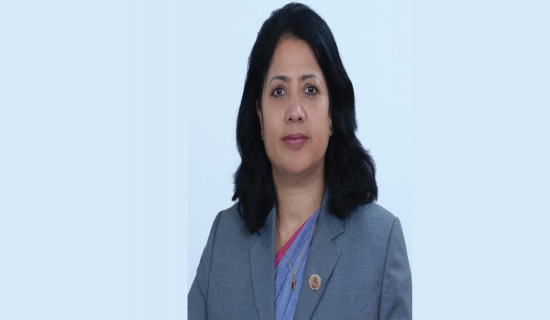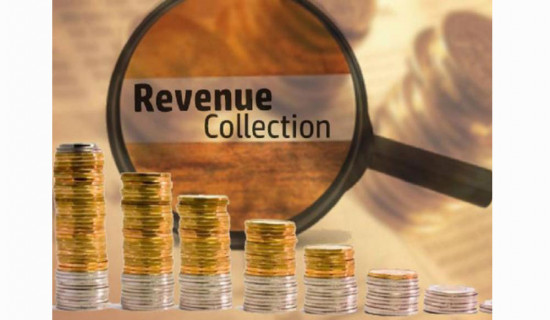- Thursday, 8 January 2026
Why is business community agitating against interest rate?
Interest rate in Nepal's financial sector soared during the pre-adversity period in the country, including the earthquake in 2015 and the coronavirus pandemic in 2020. The average interest rate on credit was 13.6 per cent in July 2012 a
New census shows women having more say in family, business
The new census data has demonstrated a gradual progress in women’s property entitlement, family headship, and involvement in businesses. Of the 6.66 million house
Banking crisis calls for comprehensive remedy
On Friday, an employee of a micro-finance company, said she is thinking to quit the job and find one in some other sector. “Anything can happen to you, anywhere, anytime. I don’t carry my identity card with me anymore,” she said to The Rising Nepal.
Govt aims to double pashmina exports in five years
The government has introduced National Pashmina Sector Strategy 2022-2026 with a target of more than doubling the export of pashmina products in a five-year period. The strategy aims to achieve the target of exporting pashmina worth US$ 75 million (Rs. 9.75 billion in current exchange rate) by 2026. The strategy is formulated with the supp
Foreign Minister stresses activation of SAARC process
Minister for Foreign Affairs, Dr. Bimala Rai Paudyal said that she has discussed with her counterparts of countries from the region prospects of activating the SAARC (South Asian Association for Regional Cooperation) process.
Development banks, finance companies seek access to deposit and credit funds
The Deposit and Credit Guarantee Fund (DCGF) raises deposit and loan guarantee fees from all banks and financial institutions (BFIs) but its financial resources are available only to the commercial banks.
A Philosophical Journey To Sex
With some rare exceptions, these two analogies fit all human relations with the opposite sex. You might have heard about 'platonic love' in which sexual desire is either non-existent or is suppressed but this type of love is limited to fiction and literature, it doesn't happen in human life. Hermits, monks and yogis are being touted for suppressing sexual desire and following the rule of 'Brahmacharya'.
Experts stress budget increase in R&D
Poor budget allocation in research and development has negatively impacted the innovation and research in the country. While federal budget is very low about 0.3 per cent of the total budget, only 0.011 per cent of the total budget earmarked to the education sector is separated for innovation, experts said at the first National Innovation Conference 2023 organised by the Nepal Academy of Science and Technology (NAST) on Tuesday.
Revenue collection, capital expenditure remain sluggish
The gap between the government's revenue collection and total expenditure is still significant contrary to the hopes that the half-yearly payment of taxes and other receipts would bridge this gap.
Six months into fiscal year, some local levels fail to unveil budget
Bisheshwar Yadav, Mayor of Kamala Municipality of Dhanusha district, is in Kathmandu to find ‘political solution’ to the ongoing deadlock at his local body so that the budget could be unveiled for the current Fiscal Year 2022/23. As per the constitutional provision, the local governments should announce their budget for any fiscal year about 21 days before the new season begins on Saun 1 of Nepali calendar that usually falls in mid-July. If the budget is not presented at the respective local assembly and approved thereof, no government can spend a penny for any administrative, development and even welfare activities.
Nepal Embassy in SAfrica issues travel advisory amid trafficking cases
The Embassy of Nepal in Pretoria, South Africa, has issued a travel advisory for Nepali nationals in the wake of the increased cases of human traffickers and manpower agents taking Nepalis illegally to South Africa via various African or Indian cities or leaving them stranded on the way.
NRB amends working capital loan guidelines
The Nepal Rastra Bank (NRB) has amended the ‘Working Capital Loan Guidelines, 2022’ implemented in October last year allowing the creditors, who have obtained the loans above the limits set by the central bank, to clear such loans in a period of two-and-a-half years.
Govt worried over low revenue collection
The government has failed to raise the revenue collection even more than two months since the expenditures surpassed its income by the end of the first trimester of the current fiscal year 2022/23. Collected revenue is no
Pokhara Int'l Airport inauguration today
The Pokhara International Airport (PIA) is coming into operation from Sunday, the first day of the New Year 2023. Prime Minister Puspa Kamal Dahal Prachanda will inaugurate the aviation infrastructure in the lake city which is the capital of Gandaki province as well. Construction of the national pride project in Chhinedanda, 3km east of existing Pokhara Domestic Airport, of Pokhara Metropolitan City in Kaski district was com
41% population covered under life insurance
The Nepal Insurance Authority (NIA) has selected the proposals of seven micro-insurance companies that applied for the license to operate service in difference provinces across the country.














